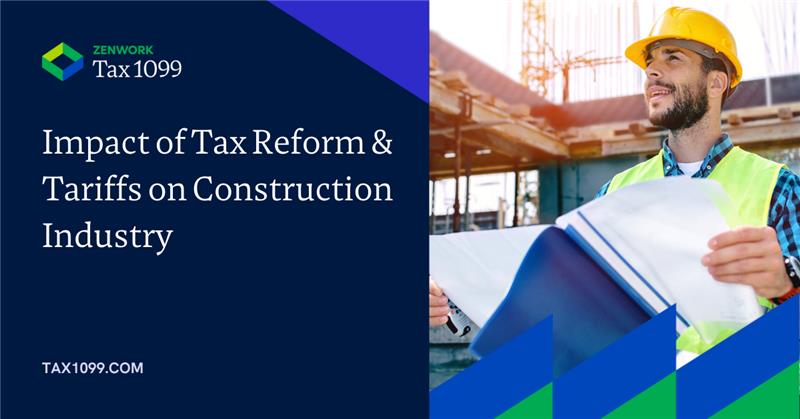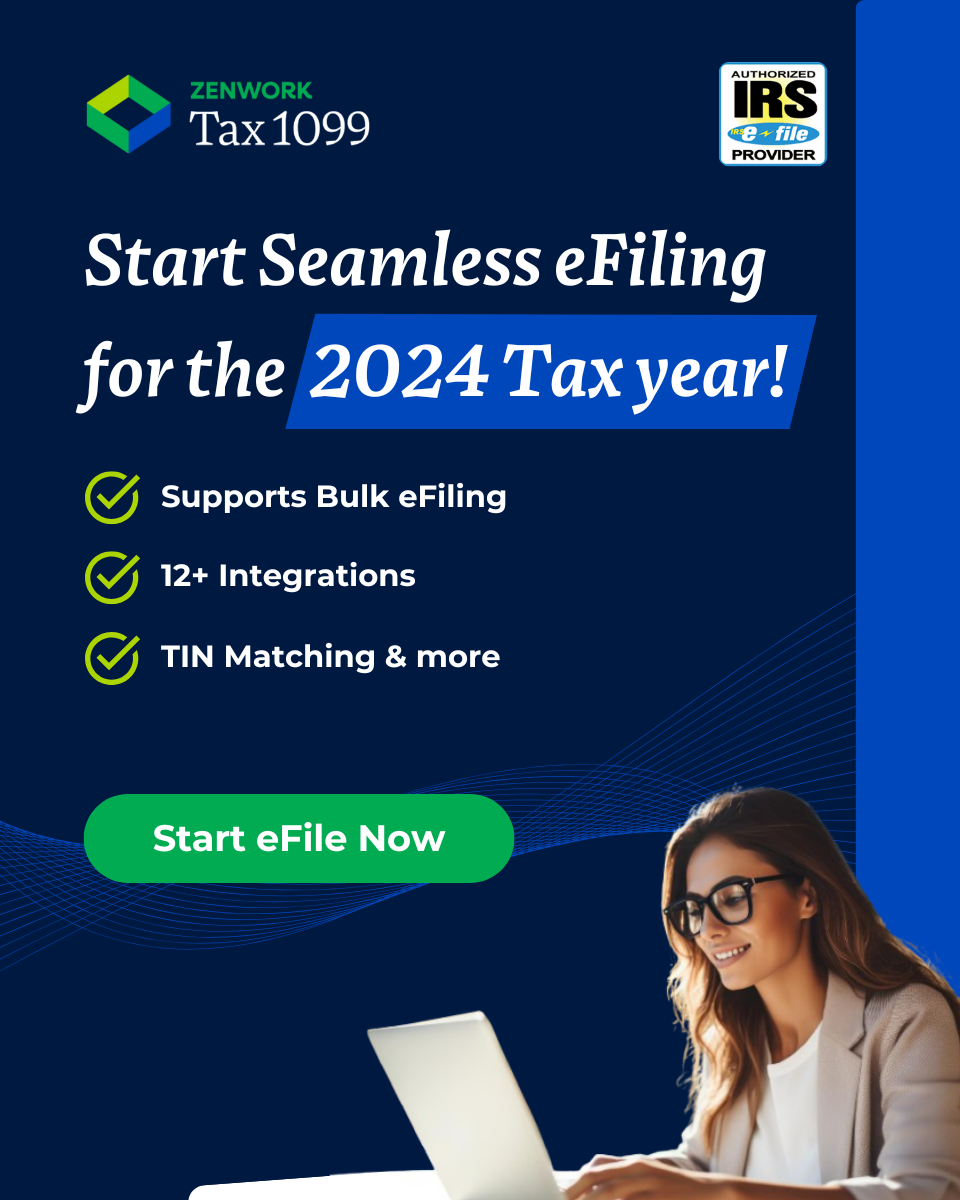Key Takeaways:
- TCJA Changes: Bonus depreciation and QBI deductions are being phased out.
- Tariff Impact: New tariffs and their impact on the construction industry.
- Labor & Immigration: Stricter immigration policies and worker verification rules.
- Plan Ahead: Importance of early tax planning and accurate 1099 reporting to stay compliant.
- Why Tax1099: Automate 1099 filing, reduce IRS rejections, and keep reporting audit-ready across projects.
The tax landscape for construction companies is changing. The new administration has brought with it a wave of change. The industry is no stranger to tight margins, complex projects, and evolving regulations. But the new changes and tariffs on imports have added a new layer of complexity. These changes may start to play a greater role in the way construction businesses manage their finances and taxes.
In this blog, we’ll break down the key changes expected for the upcoming tax year and what they mean for the construction industry.
Phasing out of TCJA
The TCJA, or the Tax Cuts and Jobs Act, was a recent amendment to the Internal Revenue Code of 1986 that went into effect on January 1, 2018. This act made several sweeping changes to personal and corporate tax. Impacting not just individuals, but also small businesses and construction companies. However, several TCJA provisions will now cease to exist very soon by the end of 2025, unless Congress acts on it and extends them.
One significant component of the TCJA that has a direct impact on the construction industry is the bonus depreciation for qualified property, such as heavy construction equipment. Businesses could usually write off 100% of the cost of the equipment as long as it was put to use between September 28, 2017, and December 31, 2022. This helped construction companies lower their taxable income and reinvest in new tools and machines. However, it is now being phased out slowly, with a 20% decrease every year and eventually it will expire by the end of 2026.
Another TCJA component that’s going to change is the Qualified Business Income (QBI) deduction, also known as Section 199A. This lets owners of pass-through entities (like LLCs, S Corps, and partnerships) deduct up to 20% of their qualified business income, which helps to bring down their overall taxable income. It’s been a tax-saving tool for contractors and business owners. But it’s scheduled to expire on December 31, 2025.
Impact of tariffs in construction
Since January 2025, the current administration has been imposing tariffs on imported goods. For the construction industry, it has had a significant impact particularly after the 25% tariffs on steel and aluminum imports, materials that are used in almost every construction project.
These tariffs have led to a rise in construction material costs which puts pressure on contractors and developers. According to the National Association of Home Builders (NAHB), roughly $14 billion or around 7% of materials used in residential construction are imported from outside the United States. The US imports 40% of its aluminum and 25% of its steel from Canada, and another 12% of its steel from Mexico.
With reciprocal tariffs and subsequent supply chain disruptions, construction companies are now dealing with increased expenses, smaller profit margins, delays in project timelines, budget overruns, especially on fixed-price contracts where rising costs can’t be easily passed on to clients.
Labour & immigration issues
Immigrants make up a large portion of the construction workforce here in the U.S. According to the NHAB, one in four workers in the U.S. are immigrants. And because of this significant presence, any shift in immigration policy can have immediate and widespread effects on labor.
The current administration’s proposed immigration policies, including mass deportations and stricter border enforcement, pose a risk and could reduce the number of skilled laborers in the construction industry.
There has also been increased scrutiny and enforcement of worker eligibility and identity verification. This has led to an increase in hiring expenses, slowing down onboarding, and creating compliance issues. And as labor challenges grow, compliance and documentation practices are no longer optional. Staying compliant with IRS regulations becomes even more essential, especially in managing and reporting 1099 payments made to independent workers.
Stay one step ahead of any Tax Changes
It’s never too early for construction companies to focus on tax planning. Especially in a volatile and constantly changing economic climate. With tax law changes, rising tariffs, and changing immigration policies, construction companies may start to struggle with estimated tax liabilities and protecting their margins.
The need for proactive tax planning has never been more important. Focusing on tax planning before the end of the tax year will help reduce tax liability and ensure compliance. Don’t wait until the year end to start tax planning. It’s time to get ahead of your competitors and start planning-
- Track and document material costs and supplier origins to manage the tax implications of changing tariffs.
- Review contracts and bids to include clauses that allow for cost renegotiation if tariffs change.
- Assess the impact of losing bonus depreciation and adjust capital investment timelines accordingly.
- Make sure 1099 classification and reporting are accurate for all workers, especially independent contractors and subcontractors.
- Avoid common 1099 reporting mistakes construction firms make by reviewing filing requirements early and using the best 1099 filing software for construction companies.
Stay Compliant with the Best 1099 Filing Software for Construction Companies
In this complex environment, manual compliance processes just won’t cut it. That’s where Tax1099 comes in. Tax1099 has been helping construction companies over the past decade to stay compliant. The platform-
- Automates 1099 filing for construction companies, contractors, vendors, and suppliers
- Supports bulk filing for multiple projects and payees
- Enables real-time TIN matching, reducing IRS rejection risks
- Integrates with accounting systems to keep payments and reporting audit-ready
- Helps manage cost fluctuations by ensuring timely and accurate documentation, even across multiple job sites
With so many moving parts such as tariffs, tax law changes, and workforce shifts, 2025 could be a challenging year for the construction industry. But with the right tax planning strategies and the best 1099 filing software for construction in place, your company can turn uncertainty into an opportunity.



